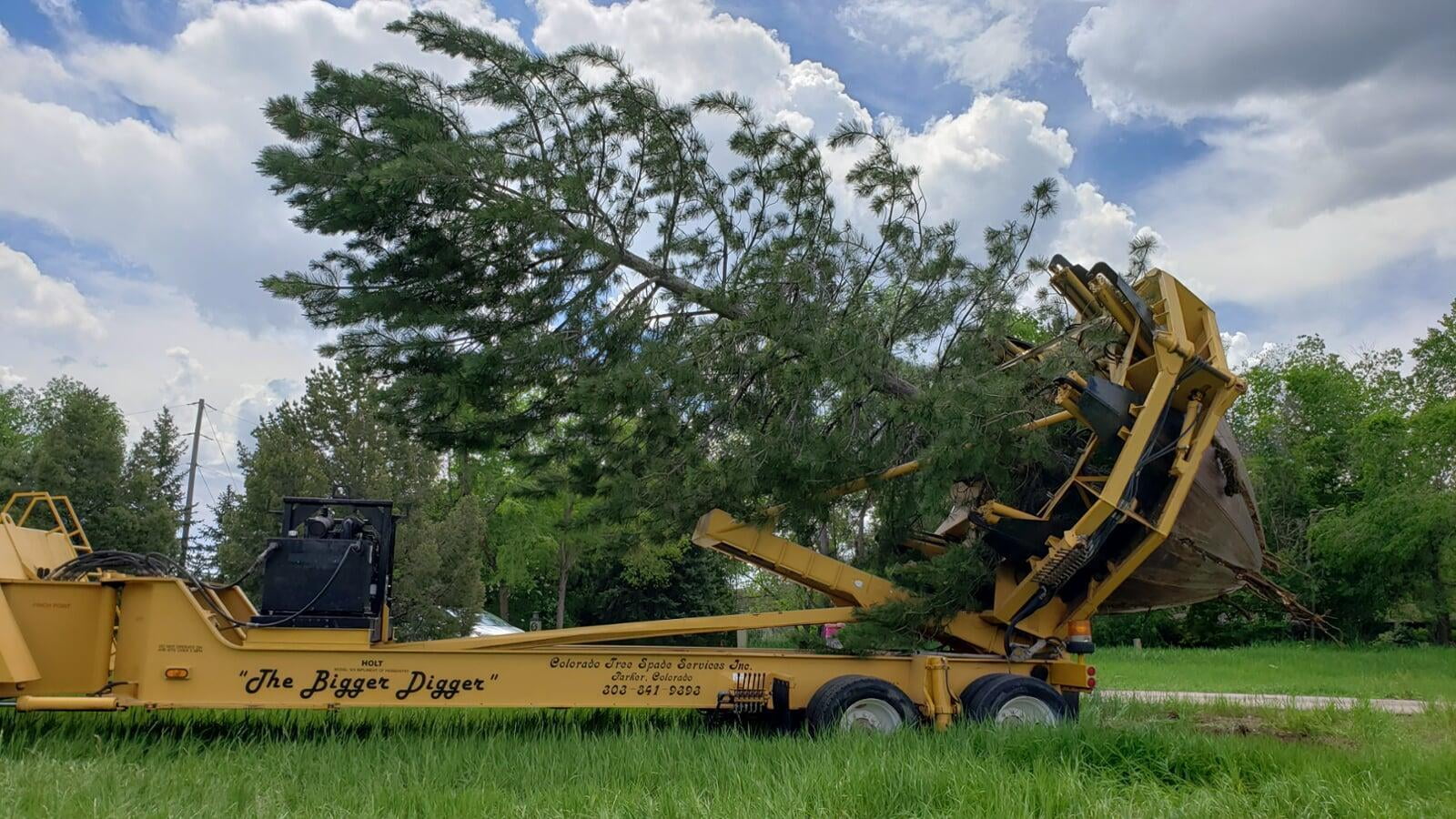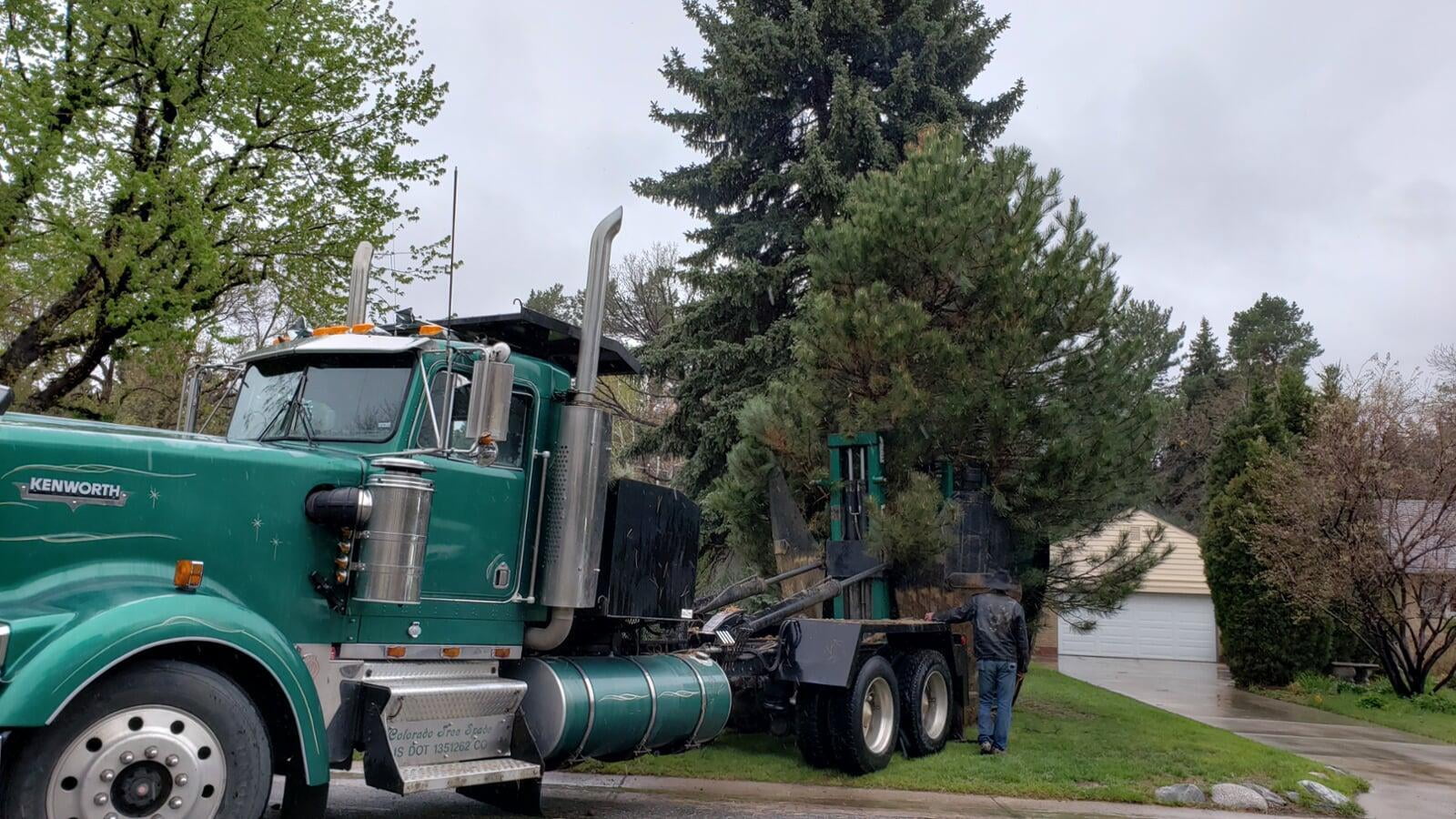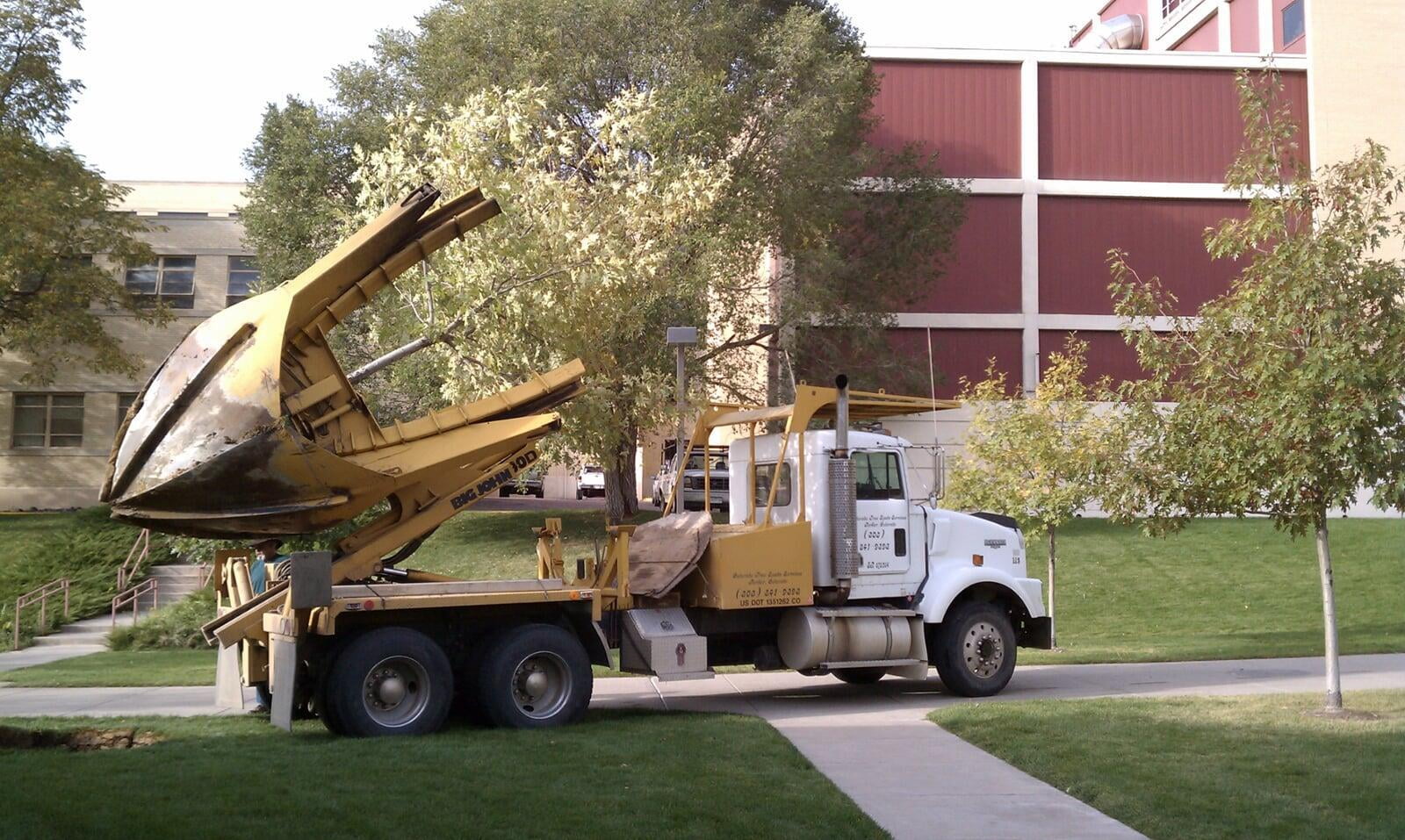Ever wondered how to move trees, especially large ones, safely and effectively? You can move trees up to 40 feet tall in a few hours. It's easier than you think and cost-effective too. Move large trees across the yard, or across town with 90%+ survivability. Tree removal is quicker and safer when you can relocate the tree instead of cutting one down. Further, if you must get rid of a healthy tree, you may be able to give it to a neighbor, donate it to a church, or call the local city Arborist to see if they would like it in the park. This way you can get a free tree removal, and they only have to pay the cost to relocate the tree - not buy a new one! You may even be able to write off the value of the tree as a tax write-off! 100" inch mobile Tree Spade.
Why Spade a Tree?
Moving a tree is more common than you think, and a much better option than cutting them down. Further, in many cases, it is much cheaper to move large trees than to buy new ones. Plus, when you move a tree by spading, it has over a 90% survival rate, compared to balled and burlapped trees which can be 50-50. When moving a tree by spading, you take the dirt surrounding the rootball with it. This means it is less stressful on the tree. It keeps more roots intact, and hydrated while being relocated.Can it be Moved?
Large tree transplanting with a spade typically comes down to our ability to access the tree. Consider, that you'll need to drive a machine equivalent to a concrete truck right up to the tree. This means in general you'll need flat ground, 8.5 feet of space to drive through gates or around retaining walls and buildings. Assuming we drive right up to the tree and touch the bumper of a semi-truck to it, we also need to be able to give it a bear hug. The digging equipment opens up like a claw, and wraps around the tree. This means we may need up to 8 feet around the tree to be clear of buildings, walls, and other trees. If you have less than this, it can still be possible, but we'll definitely need to consult and finesse our way into it. Once wrapped around, it locks into place, and settles onto the ground before spading into the dirt one shovel at a time. Once the tree is dug, keep in mind we will be lifting it as much as 10 feet off of the ground before laying it down. Once laid down, the tree will be wider than the truck, and at times make the entire truck and tree over 20 feet tall - making overhead power and phone lines a concern.When is the best time to move Trees?
Evergreen trees like Ponderosa Pines, Blue Spruces, Pinions and others can be moved year-round without concern. They are resilient and able to recover from moves more easily as they grow year round. Deciduous leaf trees such as Maple Trees, Ash, Fruiting Trees, Birches, Oaks and others generally should be moved when they have no leaves and before they bud out in the spring. The ideal time to move these trees is when they are hibernating for the winter. If they must be moved in the summer, it can be done. They will require additional attention and watering. Additionally, they may not recover in that year as all the energy they produce will go towards regrowing the roots, not keeping the leaves growing. These summer moves generally recover by the following year however. Keep in mind, that we do require dry soil conditions to keep the semi trucks from getting stuck in the mud. Further, damp ground can cause tire marks in your yard or driveway. While we can work year-round, the weather must be above 40 degrees to keep water tanks from freezing and hydraulic fluid flowing optimally for the moves.What's Underground?
Anytime you dig, underground utilities must first be located. This prevents the cutting of electrical, phone, gas lines, sewer and water lines. Before a job can be completed, it is required to have the utilities surveyed. In some cases, such as private property, utilities may not be fully located. In these cases, it is still possible we may cut an unknown utility. If utilities are marked and known to be within 18" of our digging hole, we may not be able to dig the hole. In these cases, if a tree must be removed, it most likely will have to be cut down.Size Matters
When moving a tree, it is vital to capture as much of the rootball as possible and minimize cutting too much. If you use too small of a spade, you may cut too many roots for the tree to survive. The basic rule of thumb is for every 1 inch in diameter of the trunk, you'll want to move 10 inches of dirt. As trees get over 9 inches, this rule stretches a bit. Think of blowing up a balloon, once it gets really big, for every inch bigger in diameter it gets, it has a lot more volume. Generally accepted diameters and hole sizes:Trunk Diameter Spade Size
1 to 3 inches up to 34 inch Spade
3 to 5 inches up to 55 inch Spade
5 to 6.5 inches up to model 65 Spade
6.5 to 12 inches up to model 94 Spade 12 to 18 inches Model 124
Spade 18 inches + Require hand dug, crane lifted onsite moves
Basic Questions Required to Move a Tree
Some key facts you'll need to know and provide for any tree mover. - What type of tree(s) (evergreen or deciduous leaf tree) - How many trees need to be moved? - What is the diameter(s) (distance across) the trunk(s) about 8 inches above the ground? - Where is the tree coming from and being planted (onsite location, or new address?) - Is there access for a tree spade? - When does the tree need to be moved (generally require 1-3 weeks notice)Ready for a Large Tree Transplanting?
Give us a call or fill out our contact form to learn more about how to move trees with the help of a professional service. Colorado Tree Spade is here to assist with your big tree transplanting needs. We've moved trees across the United States from California to Fort Lauderdale, Florida. We have over 30 years of expertise and tree transplanting tips to share. Colorado Tree Spade Fleet of Tree Moving Equipment.


